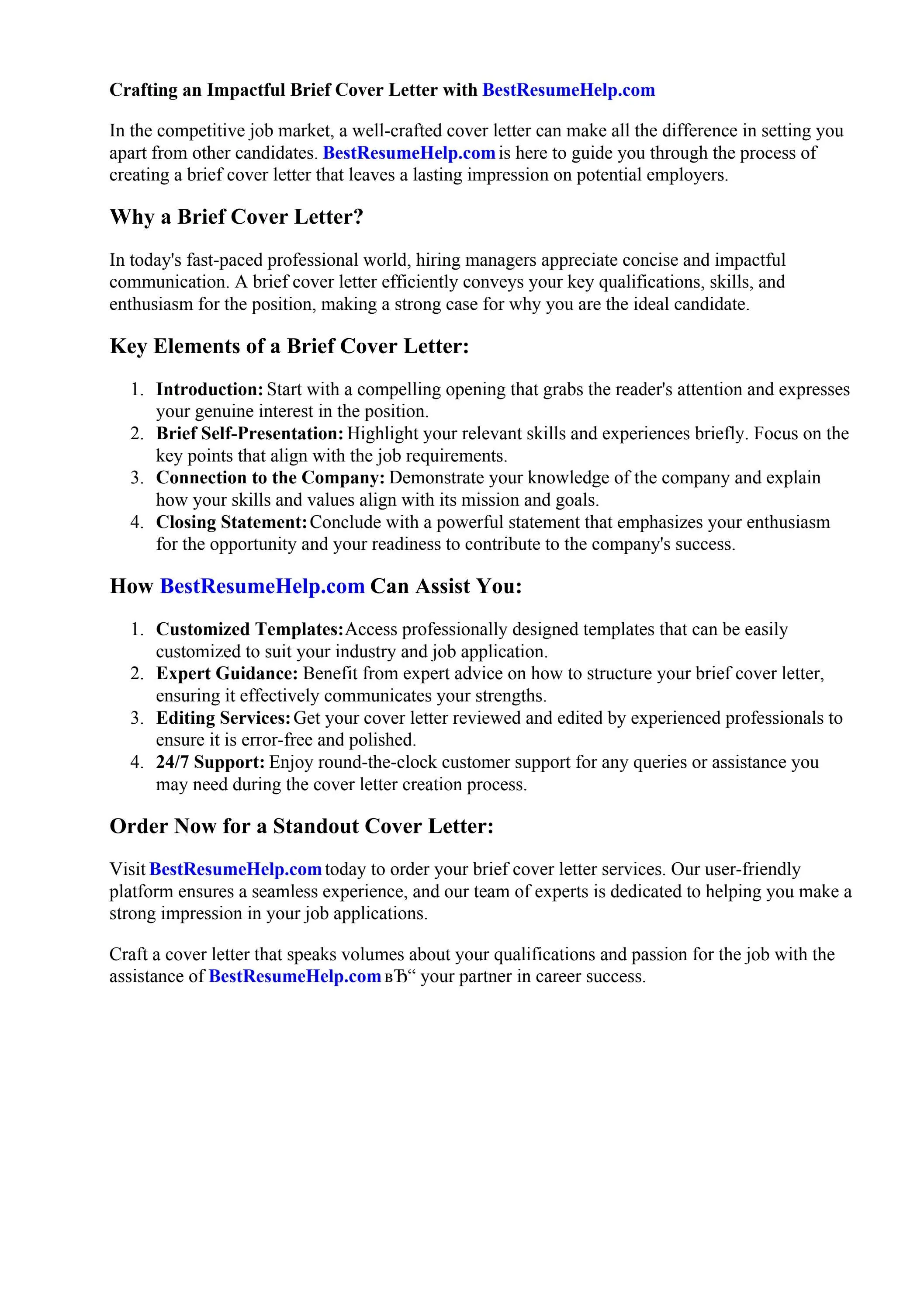What is a Brief Cover Letter?
A brief cover letter is a concise, one-page document that accompanies your resume when applying for a job. Its primary purpose is to quickly introduce yourself to the hiring manager, highlight your most relevant skills and experiences, and express your interest in the position. Unlike a traditional cover letter, a brief cover letter focuses on brevity and efficiency, aiming to capture the reader’s attention swiftly and encourage them to review your resume in detail. It’s a strategic tool designed to make a strong first impression in a competitive job market, demonstrating your ability to communicate effectively and succinctly.
Why Use a Brief Cover Letter?
In today’s fast-paced hiring environment, recruiters and hiring managers often have limited time to review applications. A brief cover letter serves several key purposes. Firstly, it saves the reader time by getting straight to the point, emphasizing your most valuable qualifications upfront. Secondly, it demonstrates your respect for their time, showcasing your understanding of professional etiquette. Thirdly, it allows you to personalize your application, tailoring it to the specific job and company. Finally, a well-written brief cover letter can significantly increase your chances of getting your resume noticed, helping you stand out from a large pool of applicants and ultimately securing an interview.
When to Use a Brief Cover Letter

A brief cover letter is suitable in various situations. It’s especially effective when you are responding to a specific job posting and want to quickly highlight your suitability. It’s also a good choice if you have limited experience and want to focus on your transferable skills or education. Furthermore, a brief cover letter can be advantageous when networking or reaching out to a hiring manager directly, as it shows respect for their time. Consider using it when you have a strong referral, providing a concise introduction from the referrer. The key is to use it when you want to make a strong, focused first impression.
5 Powerful Brief Cover Letter Examples
Here are five distinct examples of brief cover letters, each tailored to highlight different aspects of a candidate’s profile and job application. These examples showcase how you can quickly communicate your value and interest in a position. They provide practical models to help you write your own tailored cover letters, ensuring you can effectively present yourself to potential employers and make a strong first impression.
Example 1 The Enthusiastic Approach
This approach is perfect if you are genuinely excited about the job and the company. It’s about conveying your passion and demonstrating your eagerness to contribute. The goal is to make the reader feel your enthusiasm and feel like you are the perfect fit. The tone is upbeat and positive, showing how you are already thinking about the job and the contributions you will bring. This enthusiastic approach is great if the job description emphasizes the company’s culture and the importance of personality and teamwork.
Key Elements of the Enthusiastic Cover Letter
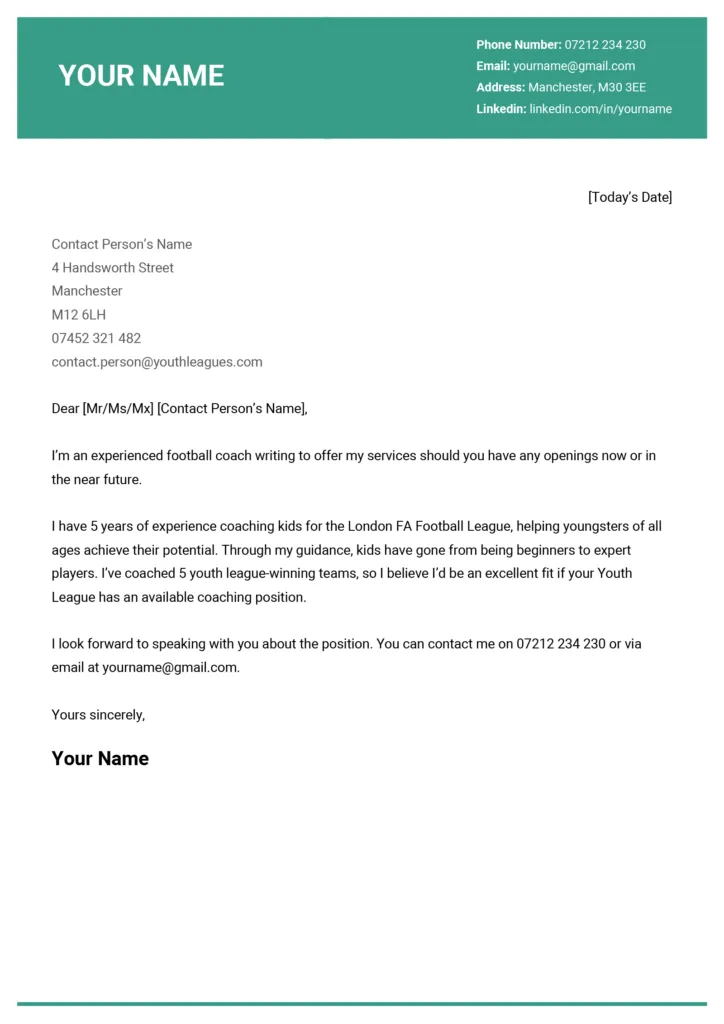
Start with a compelling statement expressing your excitement about the opportunity. Mention specific aspects of the role or company that attract you. Highlight your relevant skills and experience, emphasizing how they align with the job requirements. Close by reiterating your enthusiasm and eagerness to learn more in an interview. This approach is best suited for roles at companies that value passion and a strong cultural fit. Always remember to tailor this letter to each specific role and organization.
Example 2 The Skills-Focused Cover Letter
This cover letter emphasizes your skills and abilities, directly addressing the job requirements. The goal is to quickly prove your value by matching your skills to the job description’s keywords. This approach is ideal when you want to demonstrate how you meet the needs of the role in a clear and concise way. It’s excellent if the job description lists specific skills and qualifications that the hiring manager is looking for. Highlighting your strengths early helps you to convince the recruiter that you are the candidate they want.
Key Elements of the Skills Focused Cover Letter
Start by stating the position you’re applying for and briefly mention how your skills align with the job’s requirements. List key skills with concrete examples of how you have used them successfully. Focus on the most relevant skills that match the job description. Close by indicating your eagerness to discuss how these skills will benefit the organization. The key is to align your skills to match the need, and show how you can use them on the job.
Example 3 The Referral Cover Letter
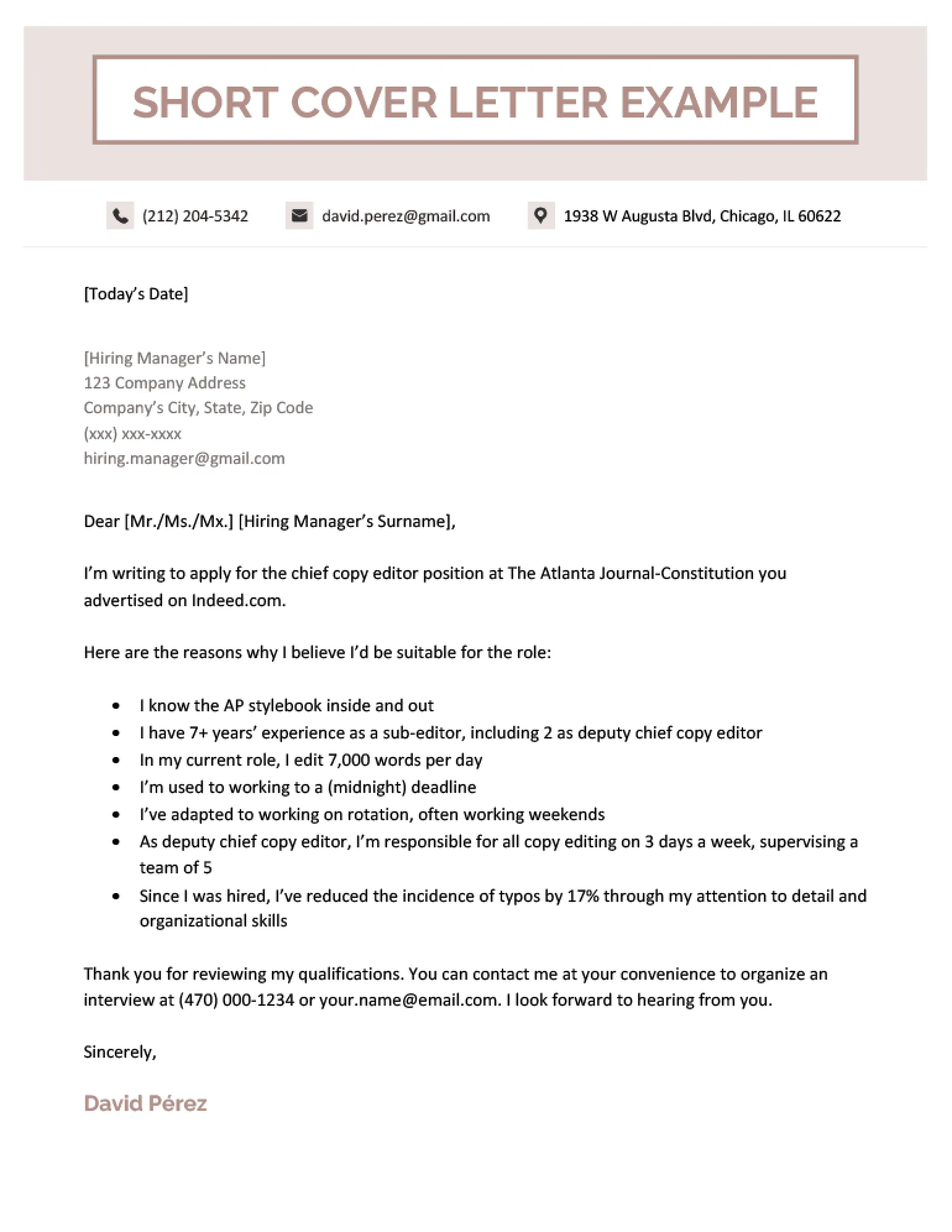
This cover letter is used when you have been referred by someone within the company. It is a way to leverage a connection and gain an advantage in the application process. The primary goal is to mention the referral, highlight your qualifications, and express your thanks. This approach leverages your existing network to enhance your application’s credibility. The key is to make the referral as impactful as possible.
Key Elements of the Referral Cover Letter
Start by mentioning the person who referred you, including their name and your relationship with them. Briefly state how you heard about the job opportunity, and why you are interested. Highlight your relevant skills and experience, focusing on how they align with the job’s needs. Close by thanking the referrer for their connection and express your interest in an interview. This letter is most effective when you have a genuine connection.
Example 4 The Problem Solving Cover Letter
This cover letter is focused on how you can solve problems and deliver results for the company. The goal is to showcase your ability to identify and address challenges that the hiring company faces. This is a direct demonstration of your value proposition to the organization. Tailor this approach if the job description emphasizes tackling specific problems or challenges. It’s a fantastic approach for any roles that require analytical and critical thinking skills.
Key Elements of the Problem Solving Cover Letter
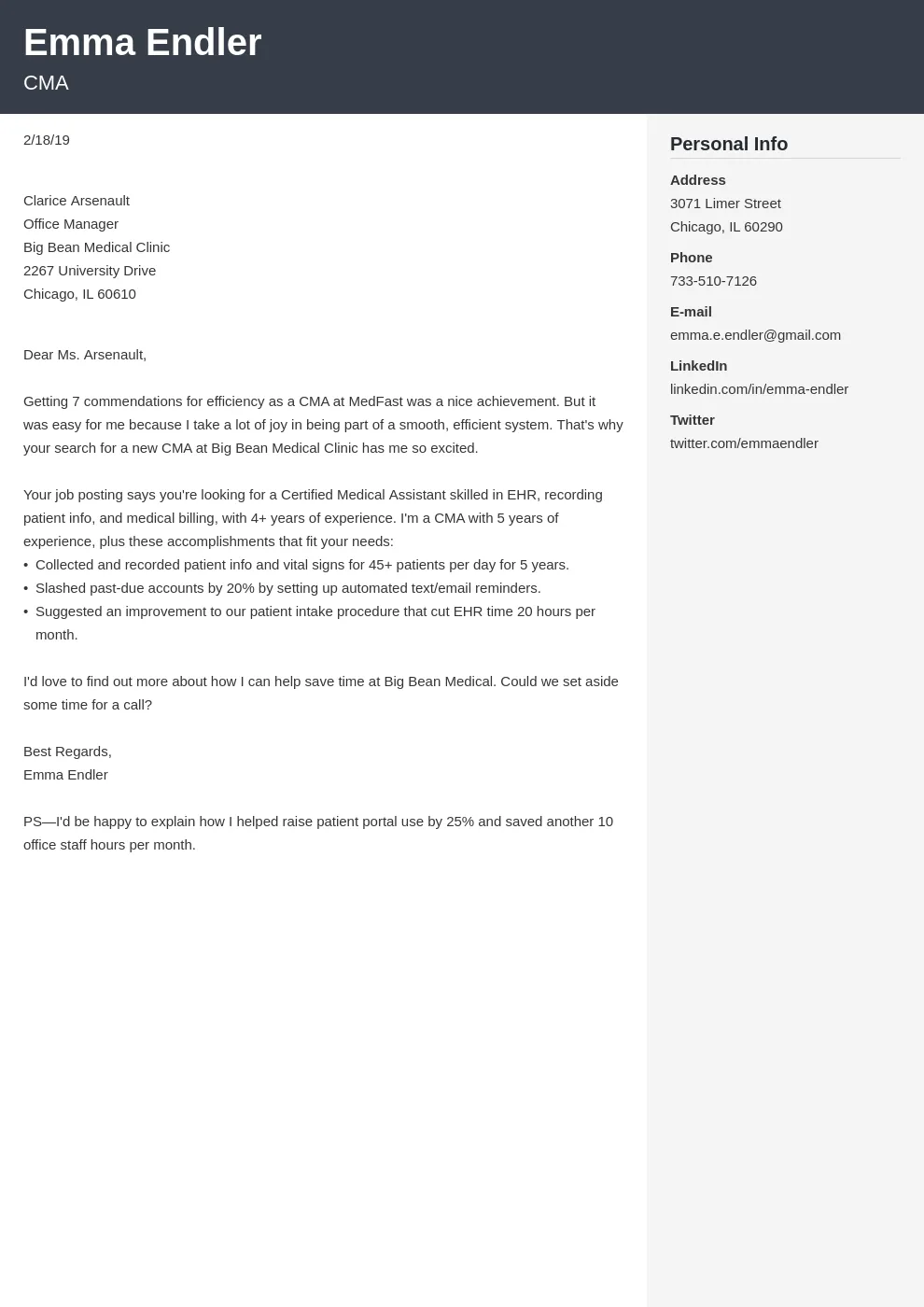
Start by briefly identifying a problem the company is facing, as mentioned in the job description or gleaned from company research. Explain how your skills and experience will help solve the problem. Provide examples of how you have addressed similar challenges in the past. Close by expressing your confidence in your ability to contribute to the company’s success. This cover letter shows that you can solve problems, which is invaluable to any company.
Example 5 The Direct Approach Cover Letter
This cover letter is about getting straight to the point, stating your interest and matching your qualifications to the job in a concise manner. The goal is to quickly illustrate your match for the role and your intent to be considered. It is an effective technique when the job requirements are clearly defined, and you want to immediately establish your fitness for the position. Be confident and direct, making it easy for the hiring manager to see your potential right away. This method can be useful when applying for jobs where the requirements are clearly defined.
Key Elements of the Direct Approach Cover Letter
Start by stating your name and the position you’re applying for. Briefly list your key qualifications that align with the job requirements. Provide specific examples of your accomplishments or skills. Close by stating your availability for an interview. Ensure this approach aligns with your style and the company culture.
Tips for Writing a Standout Brief Cover Letter
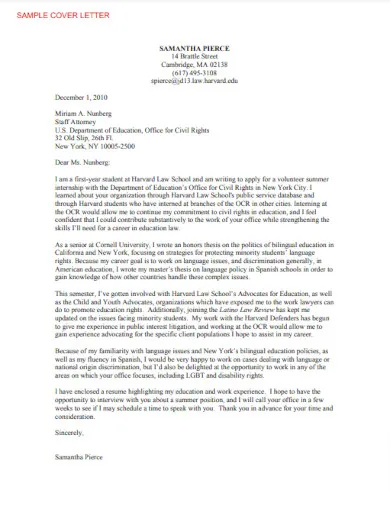
To make your brief cover letter stand out, tailor it to each job and company. Research the company and hiring manager to personalize your message. Use keywords from the job description to ensure your letter resonates. Keep the tone professional and enthusiastic. Focus on your accomplishments and quantifiable results. Proofread carefully for any grammatical errors or typos. Make sure your letter is easy to read, with clear formatting and concise language. Finally, be authentic and let your personality shine through.
Formatting Your Brief Cover Letter for Success
Formatting plays a crucial role in the effectiveness of your brief cover letter. Use a professional font like Arial or Times New Roman in a readable size (11 or 12 points). Maintain consistent spacing and alignment. Keep the letter to one page with clear margins. Use concise paragraphs and bullet points to improve readability. Include a professional header with your contact information and the date. Ensure a clean and uncluttered layout that is easy on the eyes.
Proofreading and Editing Your Cover Letter
Proofreading and editing are essential steps in writing a compelling cover letter. Always proofread your cover letter multiple times to catch any errors. Use grammar and spell-check tools, but don’t rely on them completely. Read the letter aloud to ensure the language flows smoothly. Ask a friend or colleague to review your letter for clarity, grammar, and overall impact. A polished cover letter demonstrates professionalism and attention to detail, increasing your chances of getting the job.
Final Thoughts on Brief Cover Letter Examples
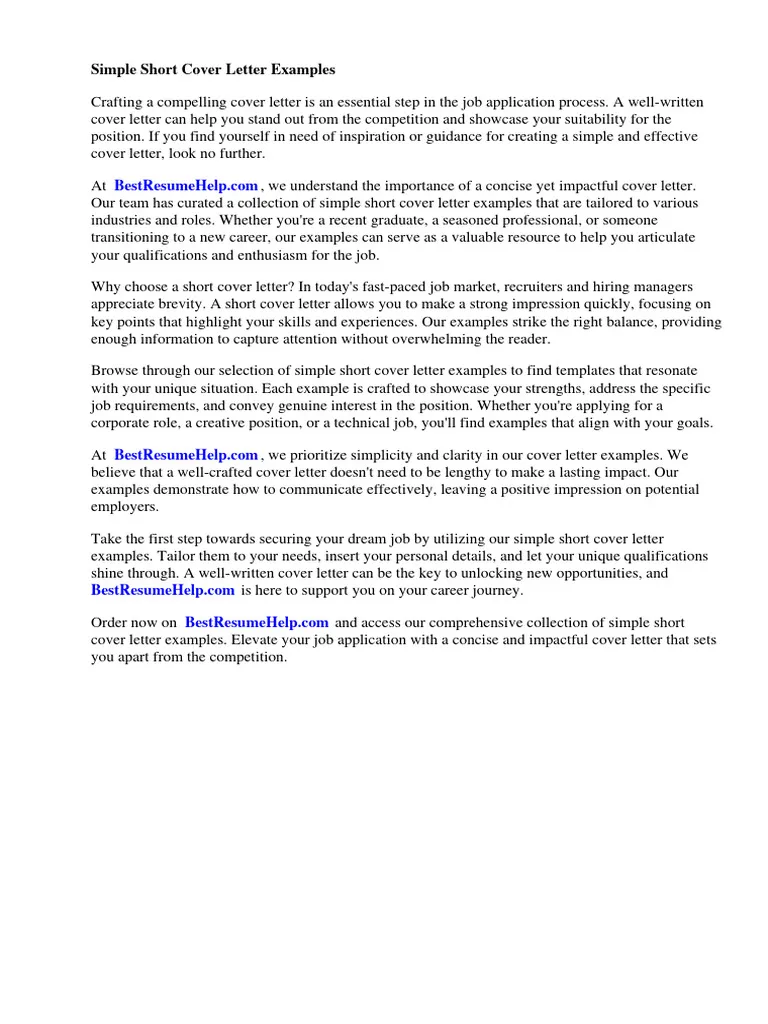
Brief cover letters are a powerful tool in the job search process. By using concise and targeted communication, you can make a strong impression and increase your chances of getting an interview. These examples provide practical models for crafting effective cover letters, and you can customize them to suit your needs. Remember to tailor each letter to the specific job and company, and always proofread carefully. Good luck with your job search!
